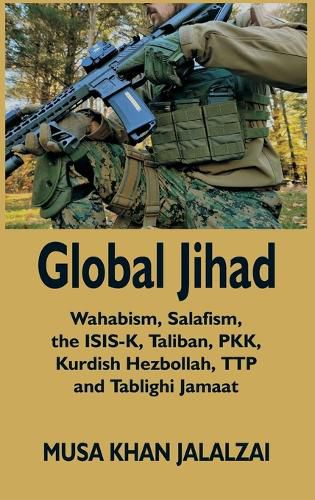Readings Newsletter
Become a Readings Member to make your shopping experience even easier.
Sign in or sign up for free!
You’re not far away from qualifying for FREE standard shipping within Australia
You’ve qualified for FREE standard shipping within Australia
The cart is loading…






This title is printed to order. This book may have been self-published. If so, we cannot guarantee the quality of the content. In the main most books will have gone through the editing process however some may not. We therefore suggest that you be aware of this before ordering this book. If in doubt check either the author or publisher’s details as we are unable to accept any returns unless they are faulty. Please contact us if you have any questions.
Armed governance as a mood of rule, violent competition, and control has characterized the modern history of Afghanistan. The majority of actors participating in determining such a process of governance are militias supported by neighbouring states. The dynamics of Taliban legitimacy, and their disputed leadership, however, is not out of the way from other powerful terrorist groups, suchlike the ISIS, Lashkar-e-Taiba and Central Asian groups. These external actors may also influence the relationship between Taliban and Afghan civilians. Taliban’s way of governance has taken place under the conditions of civil war. They have adopted culture of violence, torture and jihad against education of Afghan girls. They haven’t relinquished the culture of terrorising civilians. How the Taliban seized power in Kabul is a major question. Contexts of civil war and state weakness are often characterized by situations of governance by terror actors. The failure of Taliban intelligence to provide reliable information about the IS’s military strength has raised serious questions about the credibility of their misgovernment. While one of the important functions of an intelligence agency is to provide timely warnings of hostile military action in the battlefield.
$9.00 standard shipping within Australia
FREE standard shipping within Australia for orders over $100.00
Express & International shipping calculated at checkout
This title is printed to order. This book may have been self-published. If so, we cannot guarantee the quality of the content. In the main most books will have gone through the editing process however some may not. We therefore suggest that you be aware of this before ordering this book. If in doubt check either the author or publisher’s details as we are unable to accept any returns unless they are faulty. Please contact us if you have any questions.
Armed governance as a mood of rule, violent competition, and control has characterized the modern history of Afghanistan. The majority of actors participating in determining such a process of governance are militias supported by neighbouring states. The dynamics of Taliban legitimacy, and their disputed leadership, however, is not out of the way from other powerful terrorist groups, suchlike the ISIS, Lashkar-e-Taiba and Central Asian groups. These external actors may also influence the relationship between Taliban and Afghan civilians. Taliban’s way of governance has taken place under the conditions of civil war. They have adopted culture of violence, torture and jihad against education of Afghan girls. They haven’t relinquished the culture of terrorising civilians. How the Taliban seized power in Kabul is a major question. Contexts of civil war and state weakness are often characterized by situations of governance by terror actors. The failure of Taliban intelligence to provide reliable information about the IS’s military strength has raised serious questions about the credibility of their misgovernment. While one of the important functions of an intelligence agency is to provide timely warnings of hostile military action in the battlefield.